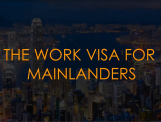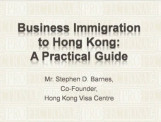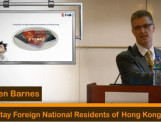
The 10 Key Reasons Why Foreigners Seek Visas to Live and Work in Hong Kong
Posted by The Visa Geeza / in Employment Visas, Family Visas, Investment Visas, Long Stay & PR, Musing, Special Programmes / 10 responses
Migration demographic analyses first came into play in 1885 in the Journal of the Statistical Society when geographer Ernest George Ravenstein essayed what he termed the “Laws of Migration” seeking to set out an explanation for and attempting to predict migration patterns in England.
In his seminal paper, Ravenstein compared 1871 and 1881 UK census data and plotted patterns of migration movements and from his observations he contrived a series of “Laws of Migration”.
Among those laws, Ravenstein considered that there was a process of “absorption” in which people immediately surrounding a fast-growing location would move into it and the gaps they left behind were filled by others from more distant areas.
This process continued until the underlying attraction behind the movement of populations was no longer sufficiently compelling enough to maintain the momentum and the ‘migration’ was completed. Moreover, Ravenstein also stated that there was a law of “dispersion”, being the opposite of “absorption”.
Ravenstein suggested that the “Laws of Migration” were underpinned by a number of “pull” factors and “push” factors. Pull factors attracted inward migration and applied to both the highly skilled and the less so whilst push factors prompted migrants to leave their country of origin.
Examples of the “push” factors cited included high unemployment rates, low income, political instability, poor security and natural disasters. Family connections, higher income opportunities, improved medical care, greater professional career development, higher living standards and overall quality of life were cited as examples of “pull” factors.
Naturally, “pull” factors can be enhanced as a result of the posture of the receiving nation in encouraging such inflow of migrants whereby their desire to use foreign nationals in their economies is driven by labour needs, availability of land resources, overall economic opportunities and political liberalism.
As you would expect, Hong Kong has a number of “pull” factors which attract highly skilled immigrants from more than 120 economies into our economy, and the people who have gone through the process of migration to the HKSAR generally agree these include the following:
1. Geographical location, especially its proximity to mainland China.
2. Excellent employment opportunities.
3. Relatively high salaries.
4. Low rates of tax.
5. Easy and efficient immigration procedures.
6. Excellent telecoms.
7. A largely bi/trilingual workforce.
8. Low risk of terrorism.
9. The rule of law.
10. Low level of overt racism.
In recent years, Hong Kong has introduced specific immigration programmes to encourage these “pull” factors including the Admission of Mainland Talents Scheme, the Quality Migrants Admission Scheme, the Immigration Arrangements for Non-local Graduates and the Capital Investment Entrant Scheme. All other immigration is managed under the General Employment Policy and the policy in respect of family dependent relationships.





















































































































































































































